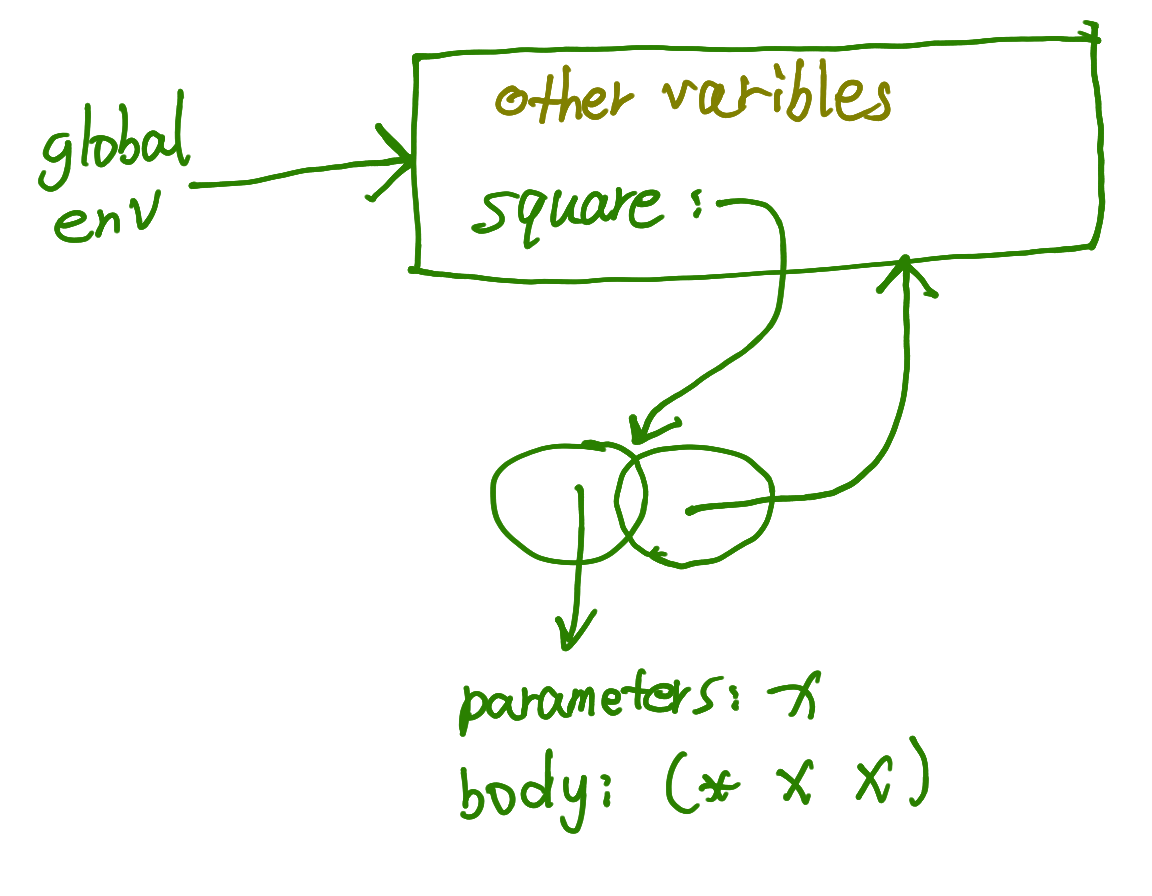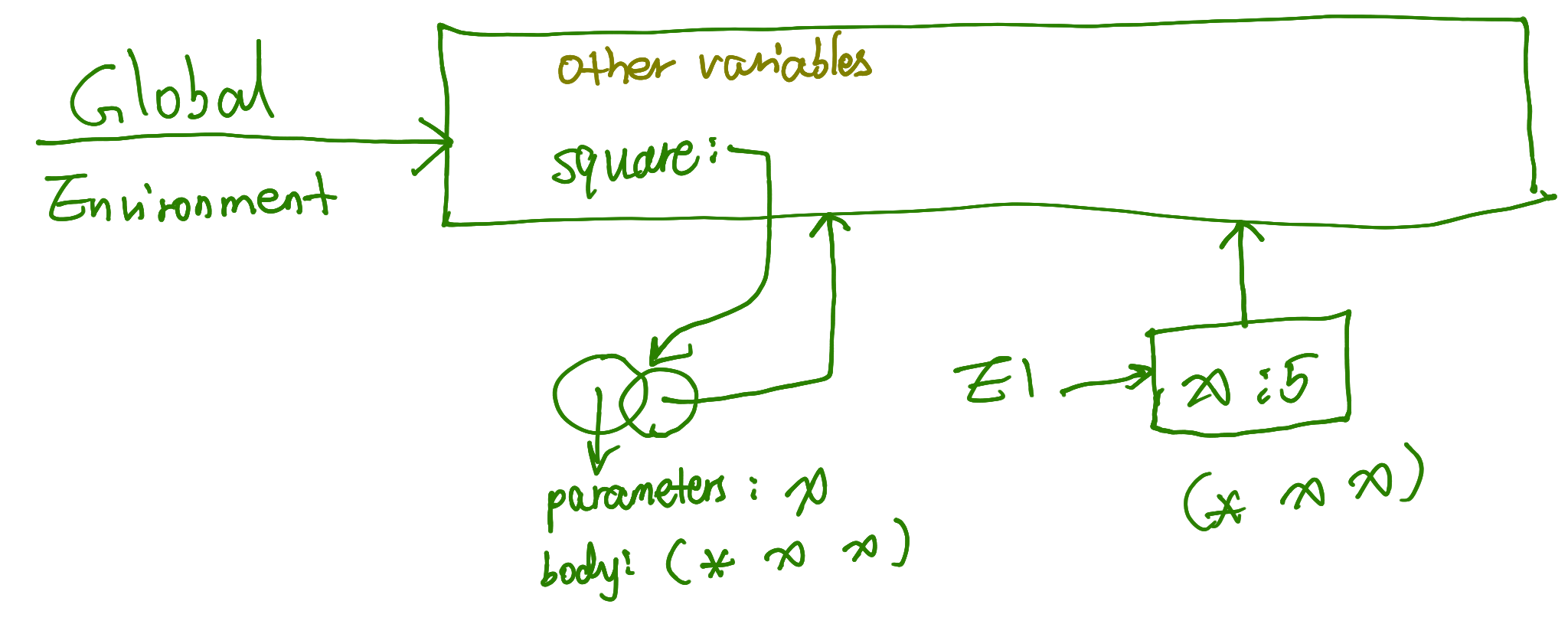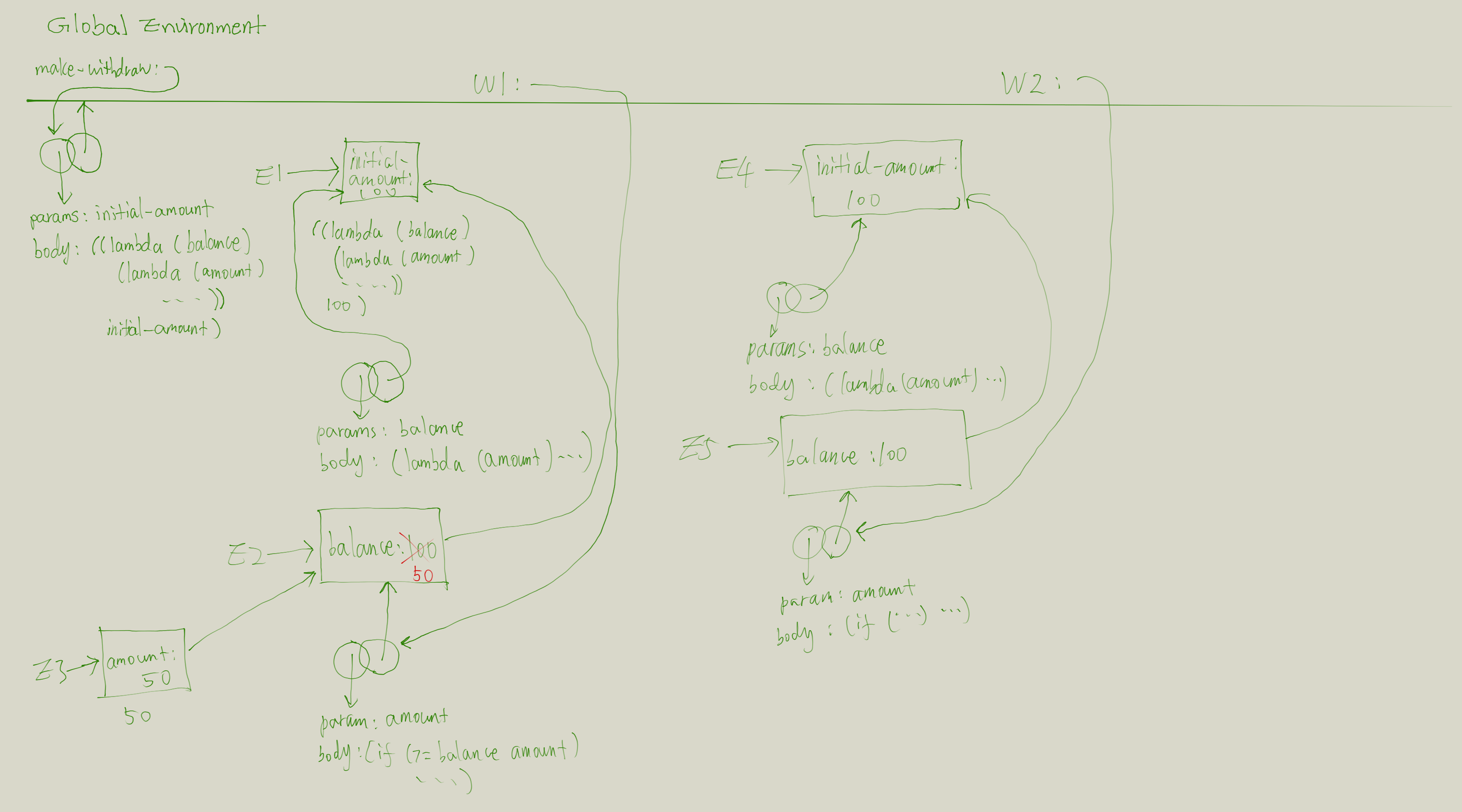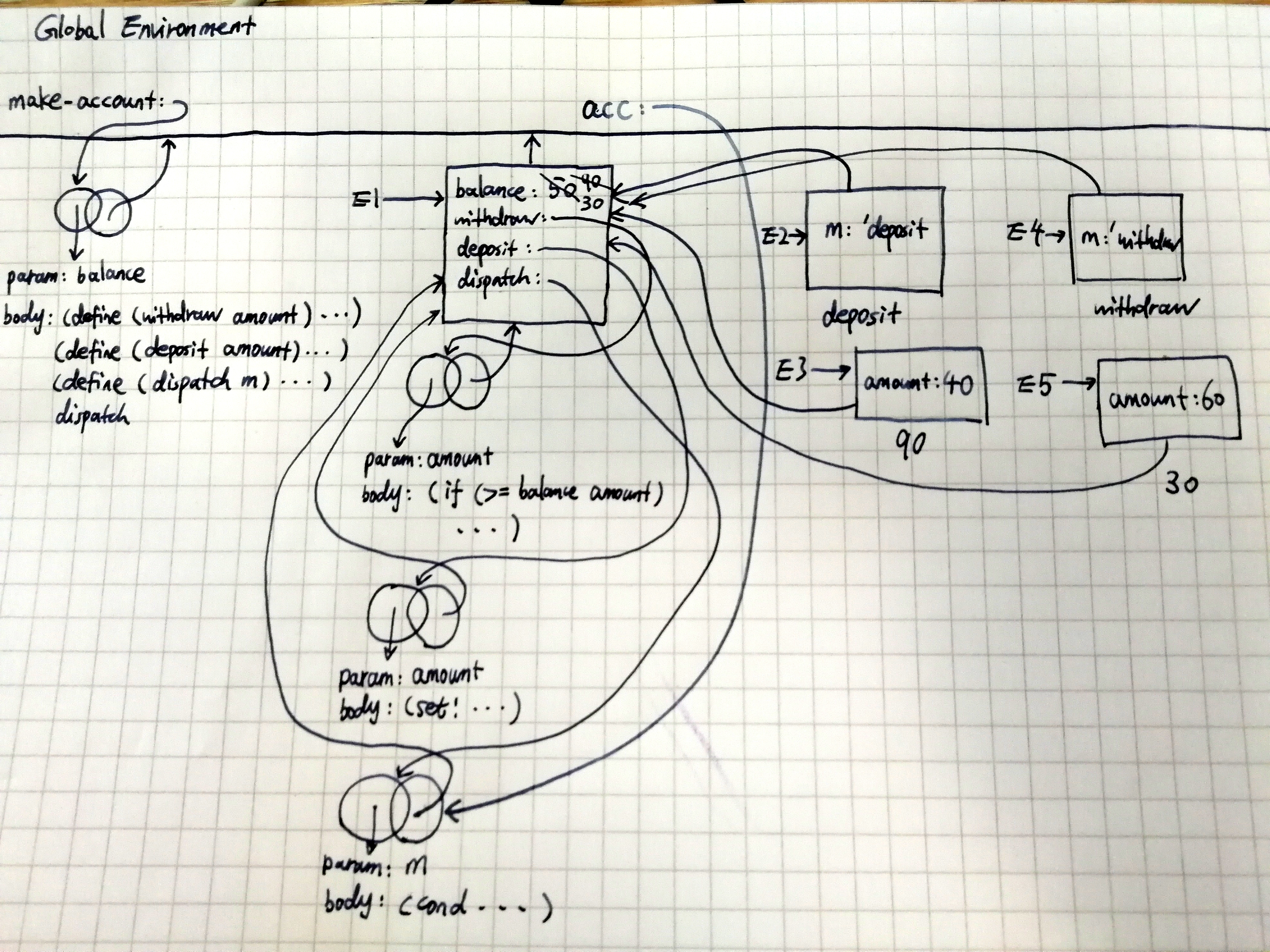SICP Goodness - The Environment Model
The environment model of evaluation

Do you think Computer Science equals building websites and mobile apps?
Are you feeling that you are doing repetitive and not so intelligent work?
Are you feeling a bit sick about reading manuals and copy-pasting code and keep poking around until it works all day long?
Do you want to understand the soul of Computer Science?
If yes, read SICP!!!
Before introducing assignment operation set!, we can use the substitution model of evaluation.
For example,
(define (square x) (* x x))
(square 2)To apply the function square to the value 2, replace the variable xin the body of the function with 2, we get (* 2 2).
Notice that substitution happened here is not equal to assign x with value 2 in any C like languages. What substitution here means is that x now is the value 2. You cannot change x anymore just like you can not change the value 2.
So before assignment, a variable is merely a name for a value.
But everything changed after we introduced the assignment operation. Now we have to deal with time and identity and answer the philosophical questions like Am I the same person if I cut my finger nail? Or Can I jump in the same river twice?
The reason that we still want the assignment is that it somehow helps us to write moduler programs by providing a way to model local state.
But this breaks the old substitution model badly, because a variable is not simply a name of a value, but a place where a value can be stored in. So that later on the program can find the place and change its value in it.
The main topic of this article is to understand the new evaluation model: the environment model.
Simply put, the environment is a chain of frames, where a frame is just a mapping from variables to values.
There is one special global environment in which contains all the primitive mappings. Things like cons, + etc.
Let’s go through a simple example, consider the procedure definition
(define (square x) (* x x))evaluated in the global environment.
Evaluate a procedure
We can think of the evaluation of this function definition in 3 steps.
Step 1 The procedure definition is just syntactic sugar for an underlying implicit lambda expression. The above is equivalent to
(define square
(lambda (x) (* x x)))Step 2 The evaluation of a lambda expression will produce a procedure object. A procedure object has two parts: the code and the link to its environment.

Step 3 Register in the global environment the name square to point to the newly created procedure object.
Apply a procedure
Now we have a procedure evaluated, let’s see how it is applied.
To apply a procedure to arguments, create a new environment containing a frame that binds the parameters to the values of the arguments. The enclosing environment of this frame is the environment specified by the procedure. Now, within this new environment, evaluate the procedure body.
Let’s see an example here.
(square 5)Step 1 Create a new environment E1 which has a new frame that has x bound to 5.
Step 2 This new environment E1 points back at the global environment, because the function squre points to global environment.
Step 3 Evaluate the body of the function (* x x) within E1. Which results in 25.

Let’s test out our knowledge by doing some exercises from the book.
Exercise 3.9
In section 1.21 we used the substitution model to analyze two procedures for computing factorials, a recursive version
(define (factorial n)
(if (= n 1)
1
(* n (factorial (- n 1)))))and an iterative version
(define (factorial n)
(fact-iter 1 1 n))
(define (fact-iter product counter max-count)
(if (> counter max-count)
product
(fact-iter (* counter product) (+ counter 1) max-counter)))Show the environment structures created by evaluating (factorial 6) using each version of the factorial procedure.
The recursive version

The iterative version

Exercise 3.10
In the make-withdraw procedure, the local variable balance is created as a parameter of make-withdraw.
(define (make-withdraw balance)
(lambda (amount)
(if (>= balance amount)
(begin (set! balance (- balance amount))
balance)
"Insufficient funds")))We could also create the local state variable explicitly, using let, as follows.
(define (make-withdraw initial-amount)
(let ((balance initial-amount))
(lambda (amount)
(if (>= balance amount)
(begin (set! balance (- balance amount))
balance)
"Insufficient funds"))))Recall from section 1.3.2 that let is simply syntactic sugar for a procedure call:
(let ((<var> <exp>)) <body>)is interpreted as an alternate syntax for
((lambda (<var>) (body)) <exp>)Use the environment model to analyze this alternate version of make-withdraw, drawing figures like the ones above to illustrate the interactions
(define W1 (make-withdraw 100))
(W1 50)
(define W2 (make-withdraw 100))Show that the two versions of make-withdraw create objects with the same behavior. How do the environment structures difffer for the two versions?
Environment structure for the first version:

As for the second version, we have to do some preprocessing on the procedure. Basically convert the let to an extra function call:
(define (make-withdraw initial-amount)
((lambda (balance)
(lambda (amount)
(if (>= balance amount)
(begin (set! balance (- balance amount))
balance)
"Insufficient fund")))
initial-amount))Environment structure for the seconde version:

Exercise 3.11
Consider the bank account procedure of section 3.1.1:
(define (make-account balance)
(define (withdraw amount)
(if (>= balance amount)
(begin (set! balance (- balance amount))
balance)
"Insufficient funds"))
(define (deposit amount)
(set! balance (+ balance amount))
balance)
(define (dispatch m)
(cond ((eq? m 'withdraw) withdraw)
((eq? m 'deposit) deposit)
(else (error "Unknown request -- MAKE-ACCOUNT"
m))))
dispatch)Show the environment structure generated by the sequence of interactions
(define acc (make-account 50))
((acc 'deposit) 40)
((acc 'withdraw) 60)
P.S. It comes as a hindsight that the environment model is crucial to understanding the upcoming eval and apply cycle in Section 4.1.

Share this post
Twitter
Google+
Facebook
Reddit
LinkedIn
StumbleUpon
Email